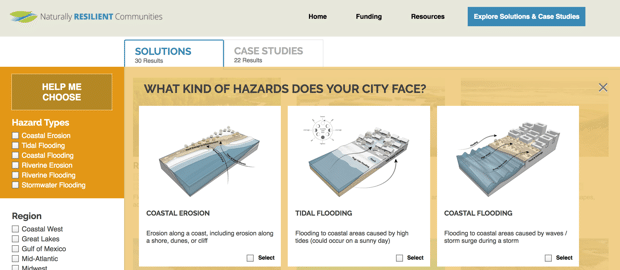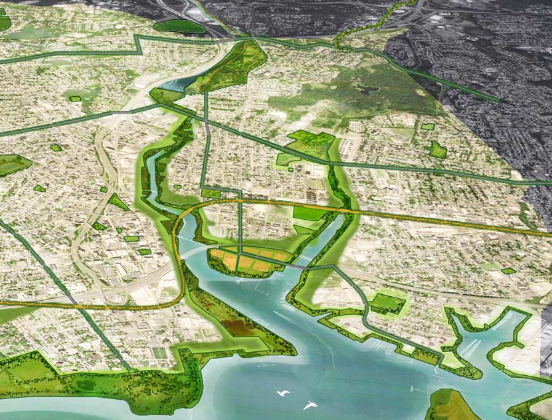A Green Infrastructure Guidebook for City Planners
Published on by Water Network Research, Official research team of The Water Network in Technology
New online resource showcases how communities across the US have successfully mitigated the effects of extreme weather by relying on green infrastructure.
Naturally Resilient Communities is an interactive tool featuring 30 case studies of places that rely on nature-based solutions to protect themselves against climate threats like flooding and coastal erosion.

Developed by the Nature Conservancy, in partnership with the American Planning Association, American Society of Civil Engineers, National Association of Counties, and the Association of State Floodplain Managers, the case studies reveal stories of cities that have rebuilt after devastating storms. Reviewing a range of green infrastructure solutions, the resource works as a one-stop hub for city planners, engineers, and community leaders.
The tool prompts users to select a hazard their city faces, with options ranging from coastal erosion to storm water flooding. Then, a menu pops up listing relevant mitigation efforts around natural infrastructure, such as green streets that reduce the flow of stormwater in Portland and wetland habitats that combat flooding in Dallas. The tool is “designed in a way that is very easy to understand—you don’t need to be an engineer to read through the case studies and see how these solutions helped,” says Nathan Woiwode, project lead at the Nature Conservancy Fund. The tool also provides ample space for customization, letting users pick their region, community type (urban, suburban, or rural), as well as scale and cost.
The resource primarily looks at threats to communities caused by flooding. Linda Langston at the National Counties Association says average flood losses in the country have increased steadily to nearly $10 billion annually. “Storms are becoming more frequent and severe, and their costs on communities are only increasing,” she says.

Credit: Sasaki
Traditionally, flood-reduction infrastructure has relied on cement and concrete in the form of dams and storm water systems. But with natural disasters ushered in by climate change, conventional protections may not be enough. The recent evacuation of around 200,000 people due to flooding at the Oroville dam illustrates the problem.
And there’s a growing understanding that green infrastructure solutions may be the way forward, says James Schwab from the American Planning Association. “There’s this idea that we can no longer engineer ourselves out of the risks by counting solely on grey infrastructure,” he says, “and our research shows us that nature-based solutions are not only more cost-effective in the long run, but they also have social and economic benefits.”
Indeed, the case studies emphasize how green infrastructure like wetlands and floodplains have enriched community life. For example, after a devastating flood in 2010, Nashville redesigned its downtown area by building a multi-use park with a variety of flood protection measures like green roofs and sunken rain gardens. These measures will weaken the effects of future storms and floods, says Woiwode, but they’ve also helped build a recreational area in the city.
Read more: City Lab
See more: Naturally Resilient Communities
Media
Taxonomy
- Urban Drainage
- Integrated Urban Water Management
- Smart City
- Wetlands
- Urban Water
- Infrastructure
- Integrated Infrastructure
- Flood management
- Flood prediction
- Flood
- Landscape & Urban Design
- Eco-City Development
- City
- Urban Design